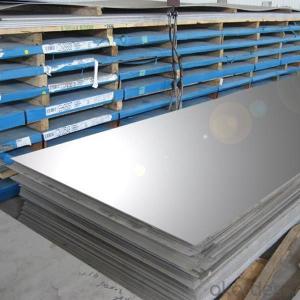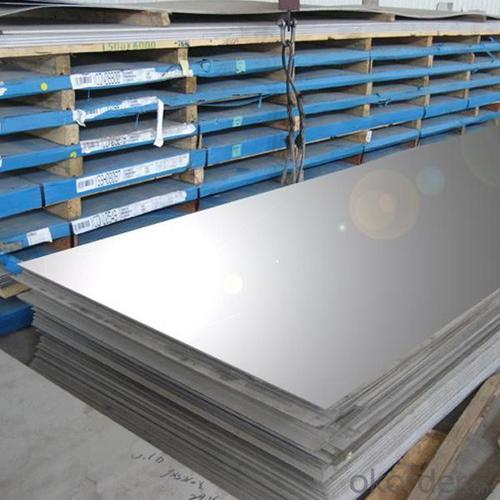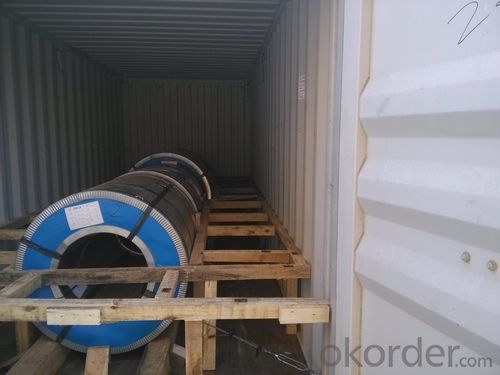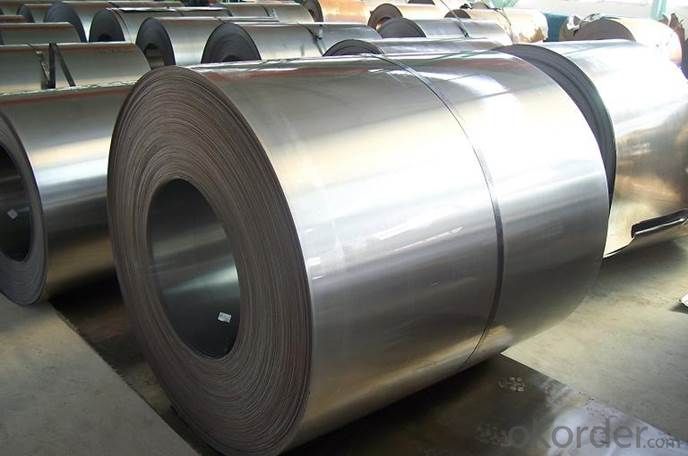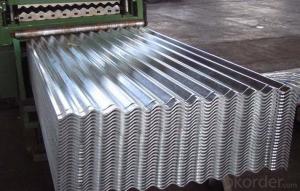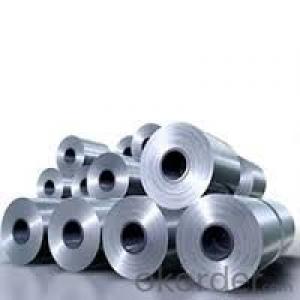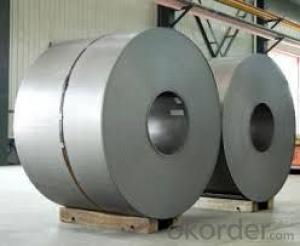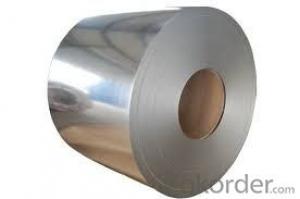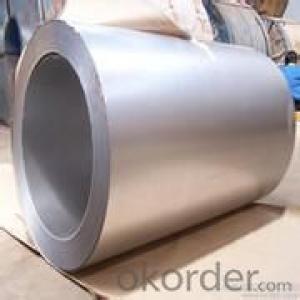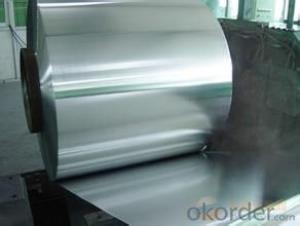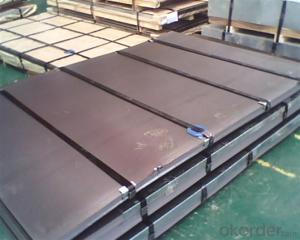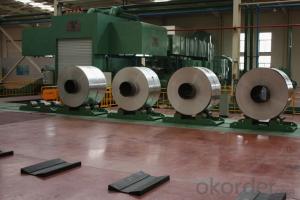COLD ROLLED STEEL COILS/SHEETS SPCC/DC01
- Loading Port:
- Tianjin
- Payment Terms:
- TT OR LC
- Min Order Qty:
- 12 m.t.
- Supply Capability:
- 200000 m.t./month
OKorder Service Pledge
OKorder Financial Service
You Might Also Like
Specification
Product Name | Cold Rolled Sheet Coil |
Material | SPCC/SPCD/SPCE/DC01/ST12/ ST14/SPCD/DC03/DC04 ect. |
Grade Standard | JIS G3302, EN10142, ASTM653, ASTM95 |
Thickness | 0.15-3.5mm |
Width | 600mm-1500mm |
Coil ID | 508-610mm |
Coil OD | max 1500mm |
Weight | 3-10 Tons |
Tolerance | Thickness tolerance:+/-0.02mm; Width tolerance:+/-5mm |
Surface | No-skin passed or Skin passed, Tensile leveled |
Surface Treatment | Chromate/Unchromate passivation, fingerprint resistant treatment, oiled/unoiled |
Annual Output | 350,000MT |
Application | Construction, hardware, home applicances, interior decoration |
General Application of Cold Rolled Steel Coil:
Classification | Designation | Characteristics | Main applications |
Commercial quality | SPCC SPCCT | Commercial quality suitable for bending fabrication and simple forming; this is the type in greatest demand. | Refrigerators, cabinets, power distribution baords and drums. |
Drawing quality | SPCD | Drawing quality second only to that of SPCEN. Excellent uniformity. | Automobile floor and roof panels. |
Deep-drawing quality | SPCE SPCF | Deep-drawing quality.With metallurgically controlled grain size, it retains its beautiful finish even after being deep-drawn. | Automobile fenders and quarter panels |
Extra deep-drawing quality | SPCG | Extra-low-carbon steel sheets with highest workability | Automobile internal panels and deep-drawn parts |
- Q: Are steel sheets suitable for fire-resistant applications?
- Steel sheets are indeed appropriate for applications that require resistance to fire. Steel has gained a reputation for its exceptional fire resistance properties, primarily because of its high melting point and its reluctance to ignite or facilitate the spread of fire. Steel sheets can be employed in an array of fire-resistant applications, including fire doors, fire-rated walls, and fireproof enclosures. Moreover, steel sheets can be combined with other fire-resistant materials, like fire-resistant coatings or insulation, to augment their fire resistance even further. In general, steel sheets are a dependable option for fire-resistant applications owing to their robustness, potency, and capacity to endure high temperatures.
- Q: How do steel sheets perform in harsh chemical environments?
- Steel sheets generally perform well in harsh chemical environments due to their inherent strength and resistance to corrosion. However, the specific performance of steel sheets in such environments depends on factors such as the type and concentration of chemicals, temperature, and exposure duration. In some cases, additional protective coatings or treatments may be necessary to enhance the steel sheets' resistance to chemical corrosion.
- Q: What is the maximum size available for steel sheets?
- The maximum size available for steel sheets can vary depending on the specific type and grade of steel being used, as well as the manufacturing capabilities of the steel supplier. However, in general, steel sheets can be manufactured in sizes ranging from small sheets measuring a few inches in width and length, to large sheets measuring several feet or even meters in width and length. The maximum size available for steel sheets can also be influenced by the transportation and handling limitations, as larger sheets may be more difficult to transport and maneuver. It is best to consult with a steel supplier to determine the maximum size available for steel sheets that meet your specific requirements.
- Q: Can steel sheets be used for magnetic applications?
- Yes, steel sheets can be used for magnetic applications. However, it is important to note that not all types of steel are magnetic. Steel can be classified into two main categories: ferromagnetic and non-ferromagnetic. Ferromagnetic steel contains iron, nickel, and cobalt, which are materials that can be magnetized. On the other hand, non-ferromagnetic steel does not contain these materials and is not magnetic. Ferromagnetic steel sheets are commonly used in magnetic applications such as transformers, motors, generators, and magnetic shielding. They are preferred for these applications because they can easily conduct and amplify magnetic fields. Non-ferromagnetic steel sheets, although not magnetic themselves, can still be used in magnetic applications as structural components or as part of a magnetic system where the magnetic field is being controlled or manipulated. When selecting steel sheets for magnetic applications, it is important to consider the specific magnetic properties required for the intended application and choose the appropriate type of steel accordingly.
- Q: Are steel sheets resistant to warping or bending under load?
- Yes, steel sheets are generally resistant to warping or bending under load due to their high strength and stiffness.
- Q: What are the common thicknesses available for steel sheets?
- The common thicknesses available for steel sheets vary depending on the specific application and industry. However, some of the typical thicknesses for steel sheets range from 0.5mm to 25mm, with increments of 0.5mm or 1mm.
- Q: Can steel sheets be used for cladding or façade applications?
- Yes, steel sheets can be used for cladding or façade applications. Steel is a versatile and durable material commonly used in construction for its strength and aesthetic appeal. Steel sheets can be easily fabricated into various shapes and sizes, making them suitable for cladding or covering building exteriors. Additionally, steel sheets can be coated or treated to enhance their resistance to corrosion and weathering, further making them a suitable choice for cladding or façade applications.
- Q: Can steel sheets be used for manufacturing shipping containers?
- Indeed, the utilization of steel sheets in the production of shipping containers is possible. Steel, being a robust and durable material, offers exceptional structural resilience, rendering it an ideal choice for the construction of shipping containers. Typically, steel sheets are employed in fabricating the container's walls, roof, and floor, guaranteeing its ability to endure the demanding conditions of transportation and safeguard the goods contained within. Moreover, steel exhibits resistance to diverse weather conditions, corrosion, and pests, thereby establishing it as a trustworthy option for the manufacturing of shipping containers.
- Q: What are the different alloying elements used in steel sheets?
- There are several alloying elements used in steel sheets to enhance their properties and performance. Some of the commonly used alloying elements include: 1. Carbon: The most important alloying element in steel, carbon provides strength and hardness to the material. It also improves the steel's ability to be heat-treated, making it suitable for various applications. 2. Manganese: Manganese is commonly added to steel sheets to improve their mechanical properties, such as strength and toughness. It also helps in reducing the brittleness of the steel. 3. Chromium: Chromium is added to steel sheets to enhance their corrosion resistance. It forms a thin protective layer on the surface of the steel, preventing it from rusting or corroding easily. 4. Nickel: Nickel is often used in steel sheets to improve their toughness and resistance to impact. It also enhances the steel's ability to withstand extreme temperatures, making it suitable for high-temperature applications. 5. Silicon: Silicon is commonly added to steel sheets to improve their strength and hardness. It also helps in deoxidizing the steel during the manufacturing process. 6. Vanadium: Vanadium is used as an alloying element in steel sheets to improve their strength, toughness, and heat resistance. It also helps in refining the grain structure of the steel, making it more uniform and fine. 7. Copper: Copper is added to steel sheets to improve their corrosion resistance and thermal conductivity. It also enhances the steel's ability to be welded and brazed. 8. Tungsten: Tungsten is used as an alloying element in steel sheets to improve their hardness, strength, and wear resistance. It is often added in small amounts to enhance the steel's cutting and drilling capabilities. These are just a few examples of the alloying elements commonly used in steel sheets. The choice of alloying elements depends on the specific requirements of the application and the desired properties of the steel. Different combinations and concentrations of these elements can be used to achieve a wide range of characteristics in steel sheets.
- Q: Is color steel plate the same as color steel tile?
- Tile color steel tile is used for color coated steel plate, pressure plate and the roller of cold bending into various wave types, it is suitable for industrial and civil buildings, warehouses, special buildings, large-span steel structure house roof, walls and wall decoration, has the characteristics of light weight, high strength, color rich, convenient construction, affluence earthquake, fire, rain, long service life, maintenance free, have been widely applied.
Send your message to us
COLD ROLLED STEEL COILS/SHEETS SPCC/DC01
- Loading Port:
- Tianjin
- Payment Terms:
- TT OR LC
- Min Order Qty:
- 12 m.t.
- Supply Capability:
- 200000 m.t./month
OKorder Service Pledge
OKorder Financial Service
Similar products
Hot products
Hot Searches
Related keywords
